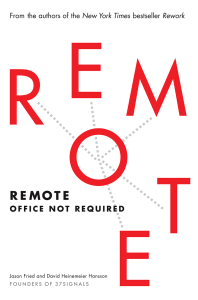 I was turned on to the wonders of customer service telecommuting several years ago when we installed our first VOIP phone system at the office. In a small, 24×7 contact center where we could get away with staffing one person during our off hours, it only made sense to allow that person to work from home. We also allowed our other agents to work a day or so remotely each week.
I was turned on to the wonders of customer service telecommuting several years ago when we installed our first VOIP phone system at the office. In a small, 24×7 contact center where we could get away with staffing one person during our off hours, it only made sense to allow that person to work from home. We also allowed our other agents to work a day or so remotely each week.
This didn’t come without challenges. Telecommuting definitely presents difficulties in managing contact center agents. It became all too easy for some individuals to become out of sight and out of mind. I once had an agent work half of his shift without a working telephone before we became aware of what he was doing!
In our contact center at Phone.com, we have approached telecommuting a bit more cautiously, even though we are ideally set up to take calls from just about anywhere. That’s the beauty of VOIP!
I recently read Remote by Jason Fried and David Heinemeier Hansson, founders of 37signals. In the book they present a compelling argument in favor of telecommuting and I feel challenged to take a closer look at it in our contact center. Here are a few things that stood out for me.
More Time- Fried and Hansson estimate that we spend three to four hundred hours per year driving to and from work! Imagine what you could do with that time? I know I would certainly enjoy more time with my family, exercise more and perhaps take the extra time to make a healthy breakfast each morning. How many people are already stressed out when they arrive at the office because of the time spent on a crowded freeway?
Managing The Right Things- Traditional managers likely do not know how to manage employees they cannot see. Fried and Hansson challenge management to evaluate employees on the quality of the work they complete. If they are effectively able to track this, it doesn’t really matter where employees work from. They make the point that “if you can’t let your employees work from home out of fear they’ll slack off without your supervision, you’re a babysitter, not a manager.”
Yay For Flexibility- The ability to telecommute offers a ton of flexibility to employees– not to mention companies. Fried and Hansson point out that employees don’t necessarily have to work at home. They can work anywhere there is Internet access. This could be at a coffee shop, a cabin in the woods, or a coworking space in a big city. This also allows companies to hire and keep the best talent regardless of where they are located in the world.
As is the case with many companies, customer service is critical to the success of the organization and yet customer service professionals are often overworked and under appreciated. By allowing your customer service staff flexibility in where they work, this potentially reduces their stress and improves their job satisfaction. Last minute call offs are the enemy of many contact centers. How many employees would still call off if they knew they could just work at home on a given day? From experience, the answer is many.
It is also clear that in order to manage remote workers effectively in a contact center, we need to have a clear grasp on what our key performance indicators are and communicate those effectively to our staff. Regardless of location, they need to know what is expected of them and management needs to know how to measure that. If everyone understands that and performs as expected, who cares where they work from?
Regardless of where your company is at in regards to telecommuting, Remote is a fantastic resource and worth a read. Fried and Hansson clearly discuss the pros and cons of telecommuting and quickly put to rest many of the fears you may have. Ultimately, as business leaders, it’s critical that we find ways to keep our awesome employees engaged in their work. If you value happy, engaged employees who are more productive, I highly recommend you consider allowing them to work remotely.
To successfully work with other people, you have to trust each other. A big part of this is trusting people to get their work done wherever they are, without supervision ~Sir Richard Branson



